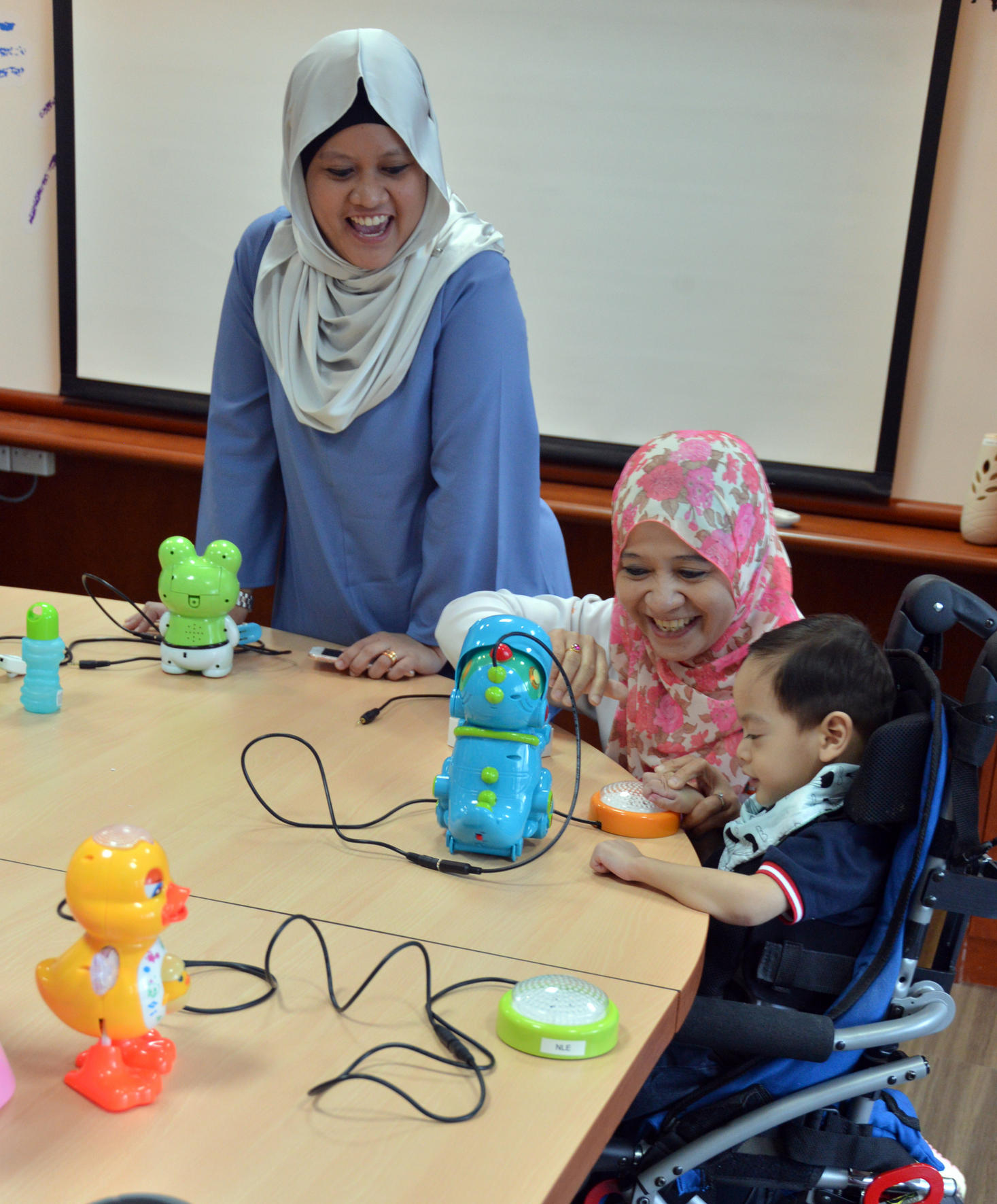Tinkering with toys so every kid can play
Volunteers are making off-the-shelf toys more friendly to kids with special needs, for instance by fitting bigger parts
Sign up now: Get ST's newsletters delivered to your inbox
Yeo Sam Jo
Follow topic:
From dancing penguins and moving Minions to dinosaurs that blow bubbles, children can be spoilt for choice when it comes to toys.
Those with special needs, however, struggle to use them. Regular toy switches, for instance, can prove too small and difficult to manoeuvre.
But recent "toy-hacking" workshops are changing this. During these sessions, volunteers tinker with off-the-shelf toys and make them more user-friendly by connecting them to bigger switches and buttons. This might require taking the toys apart and rewiring them.
Non-profit organisation Engineering Good conducted at least 20 such sessions this year with companies, the public and other beneficiary organisations.
While the group, which helps disadvantaged communities through engineering projects, did not run workshops last year, interest in toy hacking grew "organically" this year, according to its executive director Hannah Leong, 30.

Ms Nur Hidayah Shahrudin (left, in blue) watches as her three-year-old son, Rizq Nawfal Hambril, play with a toy modified by DSO National Laboratories engineers at SPD. Rizq has cerebral palsy, which makes it difficult for him to play independently with normal toys.
"The most meaningful workshops are the ones we do with parents. It gives them a sense of ownership and the skills to make more toys on their own for their children," she said.
Modified toys sometimes have furry button surfaces that are more tactile and inviting. They can also be fitted with switches made out of clothes pegs to train a child's grip.
Such toys not only bring joy to children with limited mobility, they can also train their muscles and interactive skills, according to Ms Tan Peng Chian, assistant director at AWWA Early Intervention Centre (EIC).
"We take it so much for granted that a child can blow a balloon and see it grow bigger, hit a hammer and see something bounce up," said the 44-year-old. "But some kids have never done it. Such toys can be very motivating to them and return a sense of control."
Housewife Norsuhaidah Muhammad, 35, whose two-year-old Mohamad Zidane Mohamad Zaihiri has global developmental delay and attends AWWA EIC, said the toys help him move independently.
"He still crawls and has problems reaching out. I try to put the toy somewhere higher so he will reach out. He used to only crawl, but now he can walk with some help."
Some firms are adopting toy hacking as part of their corporate social responsibility projects.
Volunteers from the Building and Construction Authority (BCA) and the built environment sector, for instance, took part in two toy hacking workshops organised by Engineering Good in July.
The 30 modified toys were presented to AWWA EIC and 25 of its children last Friday.
Engineers from DSO National Laboratories also ran their own workshops for their colleagues and students over five months this year. Last month, they donated 119 modified toys and switches to the SPD, formerly known as the Society for the Physically Disabled.
"We learnt a lot about the challenges the children face," said defence research engineer Leow Hua Sheng, 27, who led the DSO project.
"The biggest motivation was seeing them laugh."
Mayor for Central Singapore District Denise Phua, who attended last month's toy presentation ceremony, suggested an online repository of toy hacking ideas for others to learn from, so more children with special needs can benefit.
She said: "Play is a very integral part of one's formative years. It's part of education. All children, regardless of their backgrounds, whatever they can or cannot do, should have access to these play opportunities so they can develop their potential to the maximum."
Housewife Nur Hidayah Shahrudin, 29, hopes for the same for her son Rizq Nawfal Hambril. The three-year-old has cerebral palsy and attends the SPD's Early Intervention Programme for Infants and Children (Eipic) centre in Jurong.
"His hands are not that strong yet and he needs help to play with normal toys. I don't really see toys that cater to special needs kids in stores. Hopefully we can find more in future."

